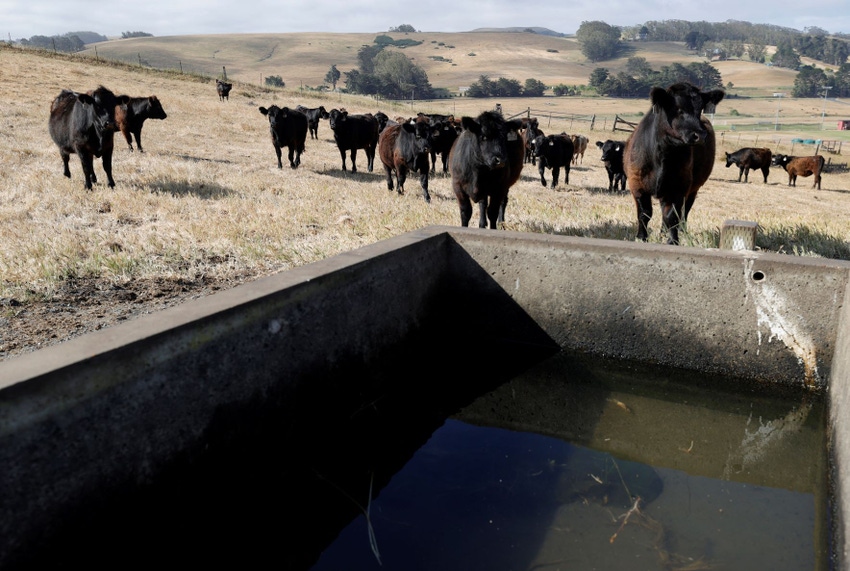Drought, forage shortages bring tough culling decisions
A 50% cut ahead of fall forage growth may allow stockpiling pastures for winter grazing. That cuts feed buying but depends on a return of rainfall.
August 2, 2022

With dry weather and short pastures, Missouri cow-herd owners face tough culling decisions. One way to match cows' needs to available grass is to sell cows. However, University of Missouri Extension Beef Nutritionist Eric Bailey says give careful thought to which grass eaters go first. Under drought stress, identifying those cows becomes urgent.
The first cut is simple, Bailey says. Even the best herds have poor performers that need to be culled. Sell cows that are not pregnant or nursing. There is no feed for freeloaders when forage is short.
"Next, cull lactating cows with bad disposition, bad eyes, bad feet or bad udders," Bailey says. "Now's time to remove cows with blemishes or poor-doing calves."
Everyone has a cull list, he adds, "but they hesitate to act if a cow has a calf." Some culling helps even in good years. Culling poor cows improves herd averages.
The goal he says is to keep the best genetics in the herd as long as feasible. A lack of feed or water forces a move.
Downsizing goes beyond simply getting rid of bad cows, Bailey says. Early weaning and selling calves can cut feed demand. That provides needed cash but can hurt annual income.
Another strategy calls for splitting a herd into young and old females. Sell one of the groups. Two- to 4-year-olds may have superior genetics, but older cows show success in the farm's management. Overall, culling depends on forage outlook for summer, fall and winter feeding.
Level of destocking can differ from farm to farm in the same neighborhood as rainfall patterns vary greatly. Bailey points out that in typical years, two-thirds of forage yield comes in spring growth. One-third comes in fall growth. That's when winter stockpiling should happen.
Even if rains return, Bailey cautions, expect below-average fall forage yields. Fortunately, fertilizer prices have come down recently, so putting down 40 pounds of nitrogen in August should help boost fall growth.
Most producers are already feeding hay and may face shortages this winter. Also, hay growth this year may have been affected by spring fertilizer prices. A big long-term problem will be winter feed, Bailey says.
Many farms face severe destocking. "Initially, consider a 25% cut," he says. "If normal rains don't return, consider another 25% later."
Selling calves early in spite of revenue loss may take care of downsizing needs. A 50% cut ahead of fall forage growth may allow stockpiling pastures for winter grazing. That cuts feed buying but depends on a return of rainfall.
The main advice is to plan downsizing, Bailey says. Management improvements, such as shorter breeding seasons, not year-round calving, can benefit.
For optimists, drought-induced culls can be beneficial. It forces decisions and management. "Producers who last longest in cow-calf businesses are not those who make the most money in good years," Bailey says. "They are those who lose the least in bad years."
More information on forages is available from the Alliance for Grassland Renewal. The alliance includes partners from university, government, industry and nonprofit groups.
Source: University of Missouri Extension, which is solely responsible for the information provided, and wholly owns the information. Informa Business Media and all its subsidiaries are not responsible for any of the content contained in this information asset.
You May Also Like



